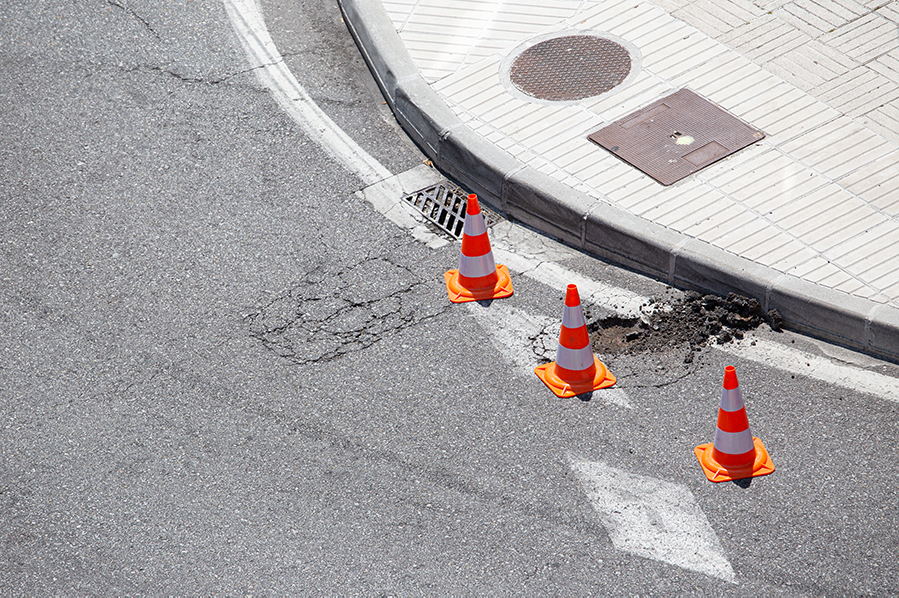Potholes can be quite the costly liability if they are left untouched in your parking lot or driveway. When moisture makes its way into the asphalt, it causes the pavement to deteriorate. The longer the cracks are left, the more water is going to intrude, and the more likely a pothole will be formed.
Potholes are a great annoyance to vehicles and create quite the tripping hazard for pedestrians. If you are wanting to avoid potential liability, potholes should be filled immediately! Pothole repair is also a necessary step in the sealcoating process. To help you understand potholes a little more, we are going to show you how they are formed and the best way to fix them.
How Do Potholes Form?
The leading cause of a pothole is moisture intrusion to the asphalt via cracks. When melted snow or rain water seeps through the cracks in the pavement, it can’t get absorbed very easily. If this water freezes, it will expand and create a “pop” which weakens the asphalt. As vehicles travel over this weakened pavement, chucks will break away and your pothole begins to form.
- Rainwater seeps into small cracks in the asphalt and puddles between the asphalt layer and the roadbed.
- Low temperatures freeze the water, forcing the asphalt upwards.
- Once the ice thaws, the water is absorbed into the weakened roadbed and leaves behind a cavity. Vehicle traffic breaks the surface apart and pushes it down in the weakened roadbed.
- Larger cracks and potholes are formed when the crumbling asphalt fills the cavity.
When you discover a pothole has formed in your parking lot or driveway, you will want to have it filled immediately. Failing to do so can cause the pothole to become much larger and potentially further damage the asphalt.
How To Repair A Pothole
Pothole repair can be relatively easy and inexpensive. If you only have one small pothole, you can likely gather a cold-mix, water-activated product and complete the fill yourself. However, if the pothole is much larger or your parking lot is full of them, you might require a much larger repair. Schedule an estimate with your local pavement or sealcoating company.
Severely damaged pavement requires patching using infrared techniques or full-depth asphalt repair. Infrared patching requires the damaged asphalt to be heated up and re-melted before being compacted to produce a like new patch area. Full-depth repairs involve cutting the damaged asphalt and completely removing it before it is replaced with fresh asphalt.
Planning on Sealcoating Soon?
Like we said before, if you are planning on sealcoating your asphalt soon, it is important to ensure the surface is in good condition before doing so. This includes repairing any potholes in the pavement. Your sealcoating company likely offers crack filling and pothole repair services. Be sure to ask them to work these items into your estimate.
Toste Construction provides professional sealcoating services, including pothole repair, to the greater Moorseville area. Contact our team today to schedule your FREE estimate. We are experienced and work on parking lots of all sizes for both residential and commercial projects throughout western North Carolina.

